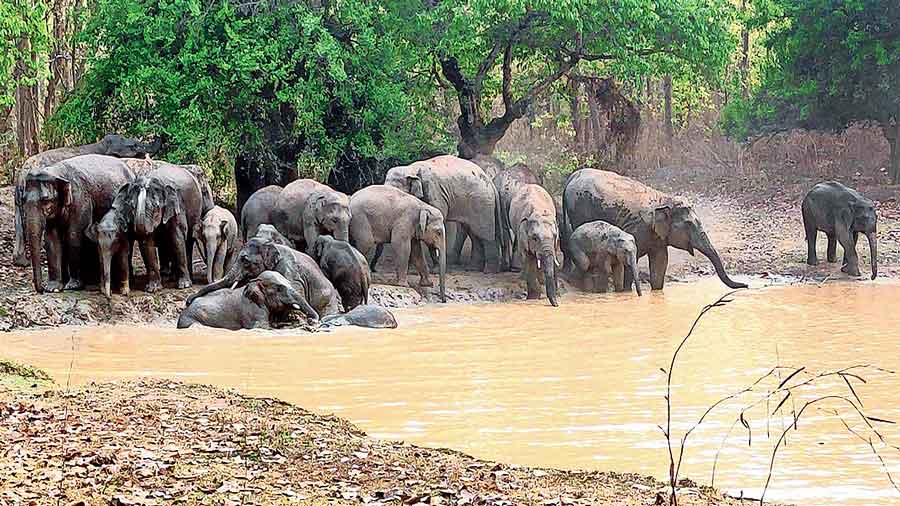A rise in the elephant population and the time they spend in south Bengal are behind the surge in the manwild conflict in the western districts of Bengal, according to foresters.
More than 15 people have died in elephant attacks in south Bengal in the past six months. The most recent casualty was a daily wage earner in Bankura, who was attacked on his way to a paddy field on Wednesday.
On Thursday, forest officials from Bengal and five states, including neighbouring Jharkhand and Odisha, took part in a workshop which had a senior representative from the Union ministry of environment, forest and climate change. A regional plan, taking multiple states and a larger landscape into account, was discussed.
“The south Bengal forest landscape (barring the Sunderbans, which does not have elephants) is interspersed with human settlements. The number of elephants the forests can accommodate (feeding capacity) is around 50. That mark was breached many years ago. But now, the number is inching towards 200. This rise is a big challenge for mitigating conflict,” said a forest official with years of experience in districts like Paschim Medinipur, Bankura and Jhargram.
Between 2017 and 2019, the forest department in Bengal had planned to keep the elephants restricted to West Midnapore and Jhargram, districts, bordering Jharkhand.
“The idea was to prevent them from moving around Bankura and other districts. We constantly monitored the Bishnupur corridor and drove elephants away. Keeping them close to Jharkhand increased the possibility of them returning to Dalma. But the increase in population made the plan backfire. For the past couple of years, the elephants broke the man-made barriers and started entering Bankura,” said the official.
More than one official pointed to the increased time the elephants have been spending in south Bengal forests.
“Earlier, the elephants used go back to Jharkhand towards the end of February and stay there in March, April, May and June — a relatively dry period for farming in Bengal. In July, when the kharif rice plant starts turning green, they would start entering Bengal. But for the past few years, the elephants are not returning to Jharkhand at all,” said another official.
A number of elephants would earlier go to Odisha’s Baripada. But deep trenches and canal dug by the Odisha government have reduced that migration, he said.
Soumitra Dasgupta, the principal chief conservator of forests and the head of the forest force in Bengal, denied that human-elephant conflict was on the rise.
“Last year, the number of deaths was around 77. The year before, it was more than 100. We are trying to reduce it even further,” he said.
The inter-state meeting, he said, was convened to improve coordination between the states. “We requested the Centre to have the meeting because we need a common plan to mitigate the human-elephant conflict,” he said. Sources in the forest department said several steps, including population control measures by sterilising male elephants, were discussed. The matter is still sub-judice. The Supreme Court had in 2013 stayed population control measures of wild animals.
Ramesh Pandey, inspector general of forests in the Union ministry of environment, forest and climate change, helmed the meeting.
“This workshop, a first-of-its-kind, aims to seek solutions. The east-central elephant landscape is human-dominated. Elephants require larger migratory routes and corridors. They move from one place to another. We cannot manage elephants by confining them. A regional plan to mitigate the human-elephant conflict is needed, taking a larger landscape into account, beyond the boundary of any one state,” he told The Telegraph.
